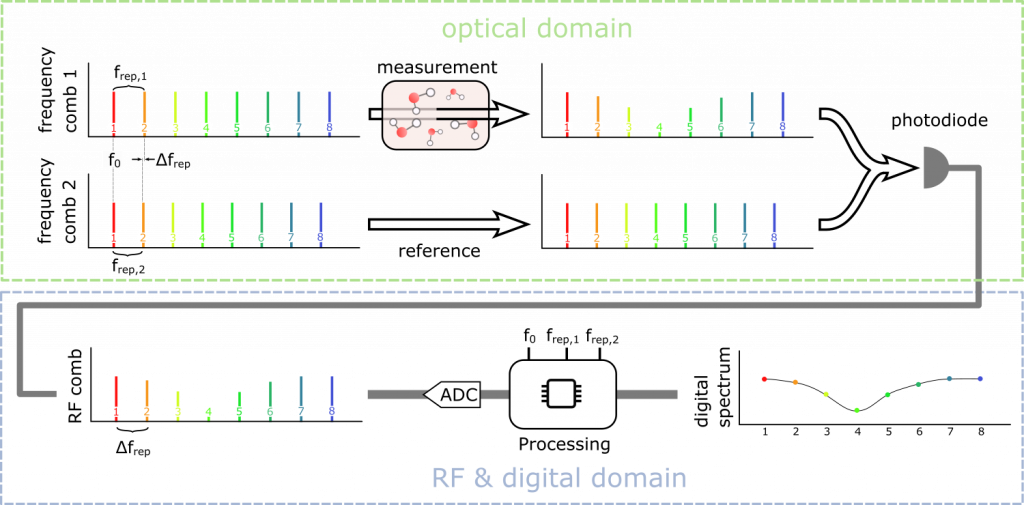The dual-comb approach (also called multiheterodyne approach) that is used in dual-comb spectroscopy1,2 allows for fast and precise scans over a broad frequency (or wavelength) range without any moving parts. While this technique can of course be used for spectroscopy3–5 it has by now found many more applications where it can replace scanning lasers and conventional broad-band light sources and optics. Examples are distance measurements (lidar)6 and rapid spatial scanning for imaging7,19. Here we will look into a few aspects of dual-comb schemes and why Kerr frequency combs are a very suitable light source.
Category: Applications
New application page
Because more and more published work features experiments that put the focus less on the Kerr frequency comb and more on the applications which are possible with Kerr frequency combs, I made a page to list such work. I will keep it updated as more work is published. For now, please let me know if I missed relevant work in the list as it is right now.
Quantum Combs
One major difference of Kerr frequency combs compared to optical frequency combs derived from mode-locked, pulsed lasers is that the photons of the comb modes are derived via the Kerr nonlinearity from a continuous-wave (CW) pump laser. This can be useful for the resulting classical frequency comb, as the pump laser constitutes a coherent line of the frequency comb itself and the nonlinearity as the gain works at all wavelengths. Moreover, the nonlinear origin and pair-wise creation of all the photons in the Kerr frequency comb outside the pump mode is a crucial requirement for applications that need quantum correlations. This field of applications is rather recent for Kerr frequency combs but it has gained quite some attention (and, or maybe thanks to, some high-impact publications1–3). Other, related work did not use Kerr frequency combs but “classical” frequency combs and additional nonlinear interactions4 or OPOs5. Squeezed light in microresonators from the second order nonlinearity was also reported previously6. But let’s have a quick look at the papers on the generation of quantum Kerr frequency combs.
State-of-the-art commercial optical data transmission
One often cited and also actively researched application for Kerr frequency combs is optical data transmission. Because of their large mode spacing, which is compatible with the ITU grid of 25, 50 or 100 GHz, Kerr frequency combs can make the ideal source for coherent data transmission. In principle it would be possible to replace several hundred individual lasers with one Kerr frequency comb. In addition it would be possible to use the coherence of the frequency comb lines to reduce effects of nonlinearity. However, before looking into the advantages of Kerr frequency combs for data transmission applications, I thought it would be a good idea to see, what the current, commercial technology is capable of. And I have to say, I am quite impressed. Here is some information about a recently installed sea fiber link in the Baltic Sea, the C-Lion-1: 15 TBits/s per fiber, 8 fibers, 120 TBits/s aggregated capacity! See below how this is achieved.
Continue reading “State-of-the-art commercial optical data transmission”


